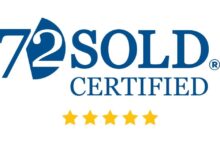Different Laws on Money Laundering in the US and How to Prevent It

Money laundering is a financial crime that allows illegal profits to be disguised as legitimate income. In the United States, combating money laundering has become a top priority due to its connection to organized crime, drug trafficking, terrorism, and other illegal activities. The U.S. has enacted numerous laws and regulations to combat money laundering, and alongside these regulations, advancements in technology—such as tools to combat money laundering, cloud rental management, and integrated payment systems—are playing an increasing role in prevention efforts. This article explores various U.S. laws addressing money laundering and examines practical steps that businesses can take to reduce their vulnerability to financial crime.
Overview of Money Laundering and Its Impact
Money laundering is the process by which illegally obtained funds are funneled through legal channels to make them appear lawful. This is typically achieved in three stages:
- Placement – Illicit money is introduced into the financial system.
- Layering – Funds are moved through multiple transactions to obscure their origins.
- Integration – The funds are reintroduced into the economy, appearing legitimate.
Money laundering not only harms the financial system’s integrity but also poses risks for organizations that might unknowingly facilitate these schemes. Therefore, it’s critical for businesses—especially in high-risk sectors such as banking, real estate, and online marketplaces—to understand relevant laws and adopt tools to combat money laundering.
Key U.S. Laws Addressing Money Laundering
In the United States, several laws are instrumental in fighting money laundering. Here are some of the most prominent:
1. The Bank Secrecy Act (BSA) of 1970
The BSA, also known as the Currency and Foreign Transactions Reporting Act, is the foundational law in U.S. anti-money laundering (AML) legislation. The BSA requires financial institutions to keep records and report large cash transactions and any suspicious activity that might indicate money laundering.
- Key Requirements: Financial institutions must report any cash transactions over $10,000, file Suspicious Activity Reports (SARs), and implement internal anti-money laundering programs.
- Preventive Tool: Tools to combat money laundering, such as SAR filing systems and transaction monitoring software, are essential for banks and businesses to stay compliant with the BSA.
2. The USA PATRIOT Act of 2001
Enacted after the September 11 attacks, the USA PATRIOT Act expanded the BSA’s reach to combat terrorism financing alongside traditional money laundering. It requires financial institutions to verify customer identities and adopt stricter compliance programs to prevent money laundering and terrorist funding.
- Section 326: This mandates that financial institutions develop Customer Identification Programs (CIPs) to verify the identity of individuals opening accounts.
- Tools for Compliance: Identity verification and Know Your Customer (KYC) tools are widely used to meet these requirements and reduce the risk of transactions tied to illicit sources.
3. Money Laundering Control Act of 1986
This act made money laundering a federal crime and broadened the scope to cover more industries. It criminalized money laundering and established penalties for those found guilty of structuring transactions to evade reporting requirements.
- Provisions: The act applies to anyone knowingly engaging in a financial transaction involving proceeds from unlawful activities.
- AML Tools: Integrated payment systems with built-in monitoring and alerting capabilities help businesses detect unusual transaction patterns that might signal money laundering.
4. Anti-Money Laundering Act of 2020 (AMLA)
Part of the National Defense Authorization Act, the AMLA of 2020 modernized and strengthened the U.S. anti-money laundering framework by enhancing regulatory oversight and increasing penalties for violations.
- Corporate Transparency Act (CTA): Under the AMLA, the CTA requires certain corporations and LLCs to disclose their beneficial owners to prevent anonymous shell companies from facilitating money laundering.
- Compliance Solutions: Tools to combat money laundering, such as beneficial ownership registries and data analytics platforms, help financial institutions comply with the AMLA and identify beneficial owners more effectively.
5. The FinCEN Geographic Targeting Orders (GTOs)
FinCEN uses GTOs to target specific geographic areas where money laundering risk is high. These orders require title insurance companies to identify individuals behind real estate transactions over certain dollar amounts, often in cash.
- Focus on Real Estate: The GTOs address concerns that real estate purchases are being used to launder money. For example, some real estate professionals use cloud rental management systems that track financial records and can serve as additional preventive measures.
- Technology’s Role: Cloud rental management solutions can centralize and safeguard transaction records, making it easier to track suspicious behavior across multiple properties.
Modern Tools to Combat Money Laundering
Technology is an essential ally in the fight against money laundering. Advanced systems and automated solutions are increasingly used to meet regulatory requirements and detect illicit activities. Here’s how tools to combat money laundering are shaping the landscape:
1. Machine Learning and AI in Transaction Monitoring
Artificial intelligence (AI) and machine learning algorithms analyze massive volumes of transaction data to detect patterns associated with money laundering. These tools provide insights into unusual patterns or behaviors that could signal illicit activities.
- Behavioral Analysis: Machine learning algorithms can distinguish between typical customer behaviors and suspicious activities, allowing faster and more accurate identification of high-risk transactions.
- Predictive Analytics: AI-powered predictive models help forecast potential money laundering schemes, which are especially useful in dynamic, high-transaction sectors like e-commerce and real estate.
2. Integrated Payment Systems
Integrated payment systems are essential for tracking payment flows, particularly in high-risk sectors such as online retail, real estate, and cross-border trade. These systems allow real-time reporting and facilitate smoother compliance with AML requirements.
- Benefits: By linking transactions across multiple platforms and services, integrated systems help identify inconsistencies, prevent duplication, and streamline reporting.
- Risk Management: Integrated payment systems can be set up with customizable alerts for high-risk transactions, allowing for immediate action on suspicious activities.
3. Cloud Rental Management Systems
Real estate remains a high-risk industry for money laundering. Cloud rental management platforms, commonly used in real estate, streamline property management by centralizing tenant data, rental payments, and maintenance records.
- AML Compliance: Cloud-based rental management solutions help real estate businesses maintain accurate records and identify discrepancies that may indicate money laundering.
- Enhanced Data Security: Cloud rental management systems provide encryption, regular backups, and access controls that protect sensitive financial information, reducing the risk of data breaches.
4. Blockchain for Enhanced Transparency
Blockchain technology offers an immutable ledger of transactions, which is difficult to tamper with and can improve transparency across financial systems. Blockchain applications in finance can help prevent money laundering by ensuring that each transaction is securely recorded and traceable.
- Digital Identity Verification: Blockchain enables secure digital identities, ensuring that only verified individuals are able to participate in transactions.
- Transparent Records: Blockchain’s transparency allows financial institutions to identify any discrepancies in financial data, making it harder for criminals to obscure the origins of illicit funds.

Practical Steps to Prevent Money Laundering
Businesses in sectors at high risk of money laundering can implement practical measures to comply with laws and reduce exposure. Here’s a list of effective steps:
1. Implement Robust KYC Protocols
Customer identification is key in preventing money laundering. Ensure that customers provide valid, government-issued identification, and cross-check their details with public databases to verify legitimacy.
2. Regularly Train Employees on AML Regulations
Regular training ensures that employees understand current AML laws, recognize red flags, and know how to respond to suspicious activities. Training should cover identifying fraudulent transactions, completing SARs, and understanding sector-specific AML laws.
3. Leverage Advanced Technology for Monitoring
Use tools to combat money laundering that offer comprehensive monitoring features. AI-driven tools can identify suspicious activities automatically, while integrated payment systems provide real-time visibility into financial transactions, enabling immediate action if needed.
4. Maintain Transparent Financial Records
Transparent record-keeping is essential for compliance and can deter illegal activities. For example, cloud rental management systems allow businesses to maintain consistent, accurate records that meet regulatory standards and simplify audits.
5. Strengthen Cybersecurity Protocols
Preventing cyber-attacks is essential for safeguarding sensitive financial data. Implement measures like multi-factor authentication, secure access controls, and regular software updates to protect against unauthorized access.
6. Stay Updated on Regulatory Changes
Money laundering laws and regulations are constantly evolving. Staying informed about updates from regulatory bodies, such as FinCEN or the Financial Action Task Force (FATF), ensures that your AML policies remain current and effective.
7. Conduct Regular Audits
Internal audits help detect compliance gaps and vulnerabilities in AML programs. Frequent audits are essential for assessing the effectiveness of your AML measures and ensuring compliance with legal standards.
Conclusion
The U.S. has implemented a strong legal framework to address the threat of money laundering. Laws such as the BSA, PATRIOT Act, AMLA, and others require businesses to actively participate in AML efforts by verifying customer identities, monitoring transactions, and reporting suspicious activities. Technology, including tools to combat money laundering, integrated payment systems, and cloud rental management, enhances the ability of businesses to detect and prevent money laundering.
By understanding these laws and leveraging modern tools, organizations can stay compliant, protect their assets, and reduce the risk of being used as a vehicle for financial crime. Educating employees, conducting regular audits, and using secure data management platforms are practical steps every.



